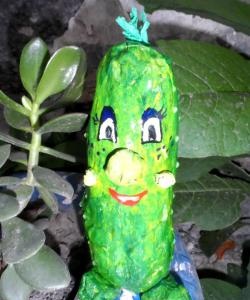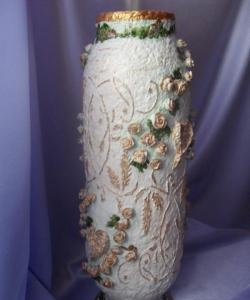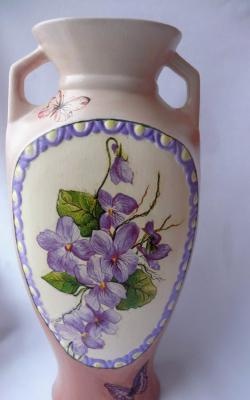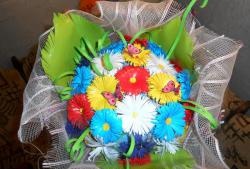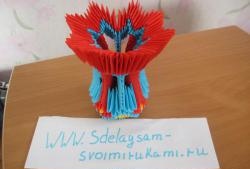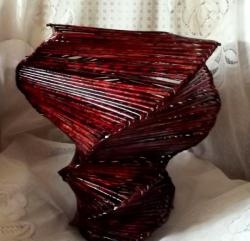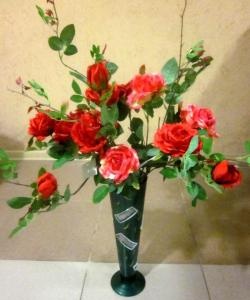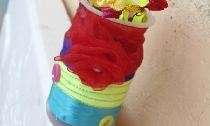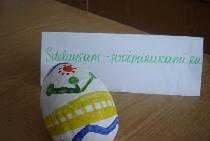- Shape for future vase;
- Newspapers
- White paper;
- PVA glue;
- Disposable gloves;
- Polyethylene film;
- Gouache;
- Glossy varnish for coating;
- Gouache and varnish brushes.
1. The preparatory phase.
Prepare a mold for a future vase. If you choose a form with a flat surface, it will be easier to work. Outside, mold the mold with polyethylene so that when removing the vase from the mold, it will not damage either the future vase or the mold itself.

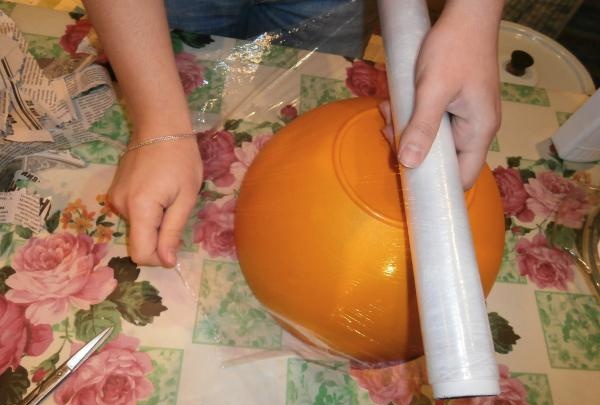
Dilute PVA glue with water in a ratio of 1: 3. Tear newspapers into small sections (small pieces of newspapers will make the surface of the vase more even, and large rectangular sections will significantly speed up the work). The number of newspapers you need depends on the size of your vase and the desired wall thickness.
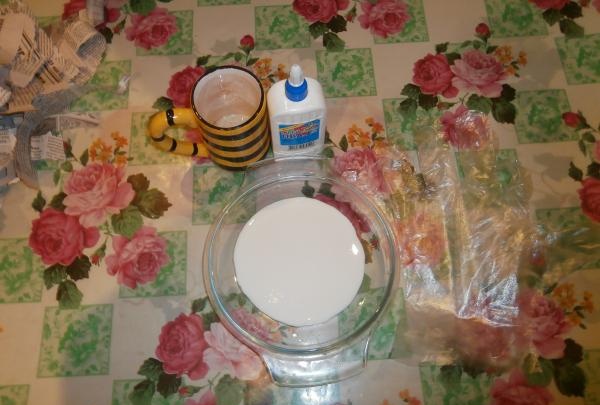
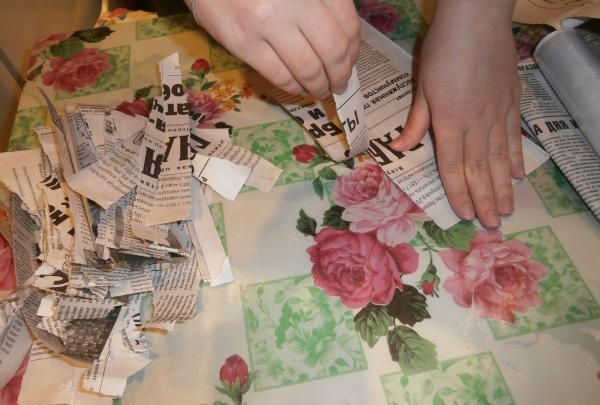
2. Making a vase.
For this stage of work, disposable gloves are useful. Dipping newspaper pieces in glue diluted with water, carefully place them on the outside of the mold (I remind you that you must first cover the mold with polyethylene). Stitch sections in a circle. When the first ball is ready, you can give it some time to dry, or continue to work, ball-by-ball stacking newspaper pieces. For best results and durability of the finished product, newspaper cuts are best applied in 8 layers.
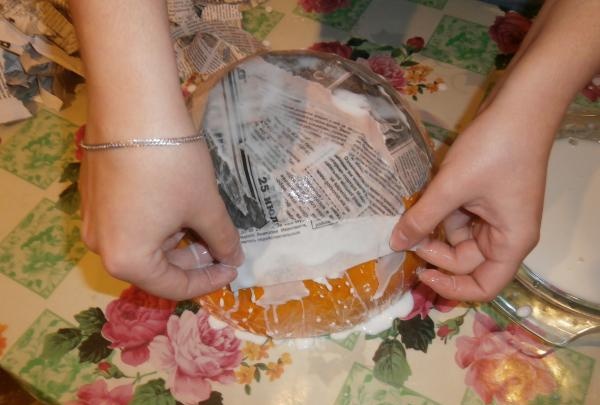
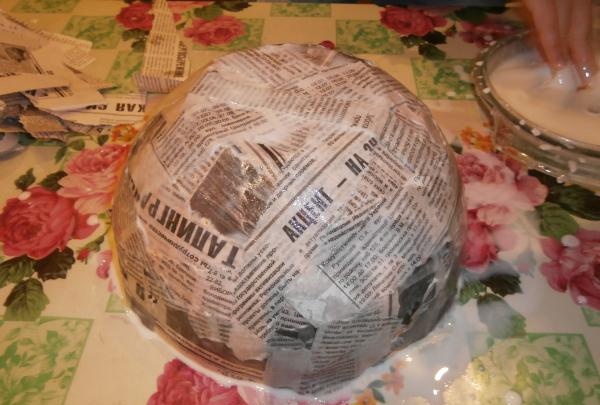
The drying process depends on the number of layers and can take from two to four days.
When the vase dries, you should carefully remove the form from it. To prepare the vase for decoration, it is necessary to glue it with small pieces of white paper in several layers outside and inside. For gluing white paper we use the same method as for gluing newspapers. Leave the vase covered with white paper for one more day.
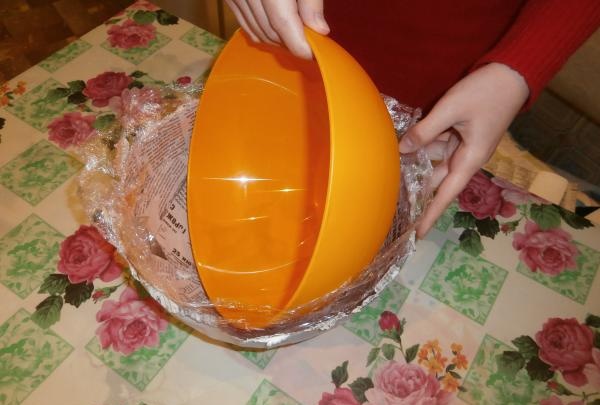

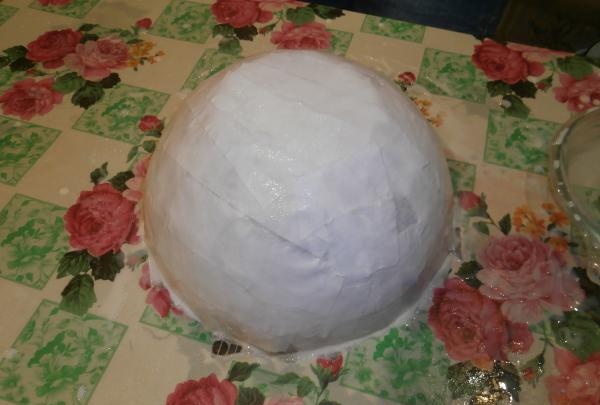
3. Decoration of a vase.
Decor Your vase depends only on your imagination. We propose to cover the finished vase with patterns using ordinary gouache. Why gouache and not watercolor paints? Everything is simple. Watercolor paints will give a softer picture, since watercolor paints are more transparent. And gouache has a denser consistency, which gives a brighter and clearer picture.
It is important to determine what pattern you want to apply, and whether you want to apply it only on the outside or on the outside and the inside. Drawing is better to put in pencil beforehand. And then draw it along the contour with gouache and a thin brush. The drawing will dry for about 1-2 hours.
4. It is advisable to varnish the finished and fully dried vase for comfortable use.
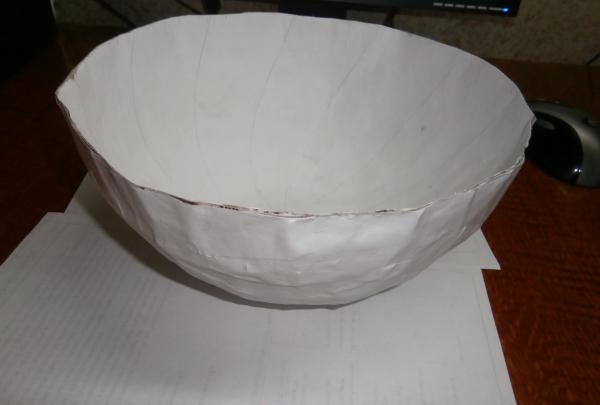
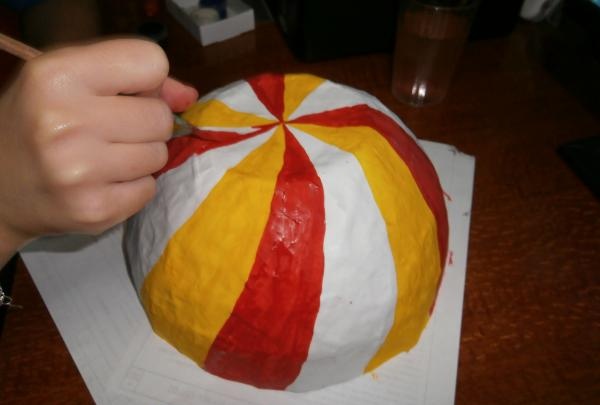
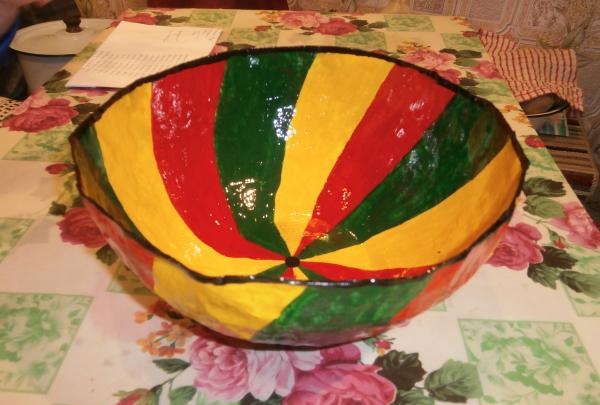
Glossy varnish will look great on the finished product. If you plan to use a vase with food, then varnish for coating should be sought in stores for creativity. If your vase will not come into contact with the products, then the usual universal varnish, which can be bought at a hardware store, is also suitable (besides, such a varnish will cost you much cheaper). Coat the finished product with varnish on all sides and leave in a ventilated area for 5 hours until completely dry.
